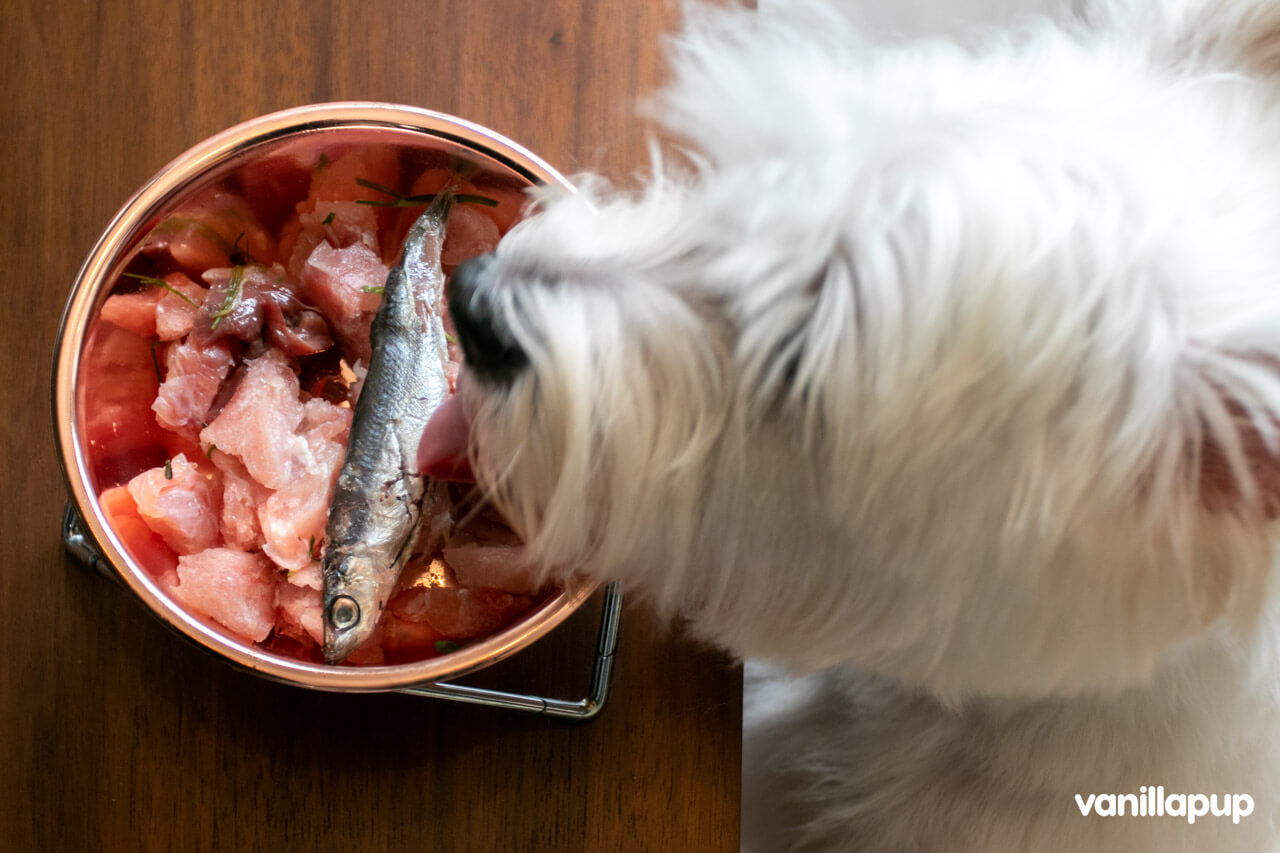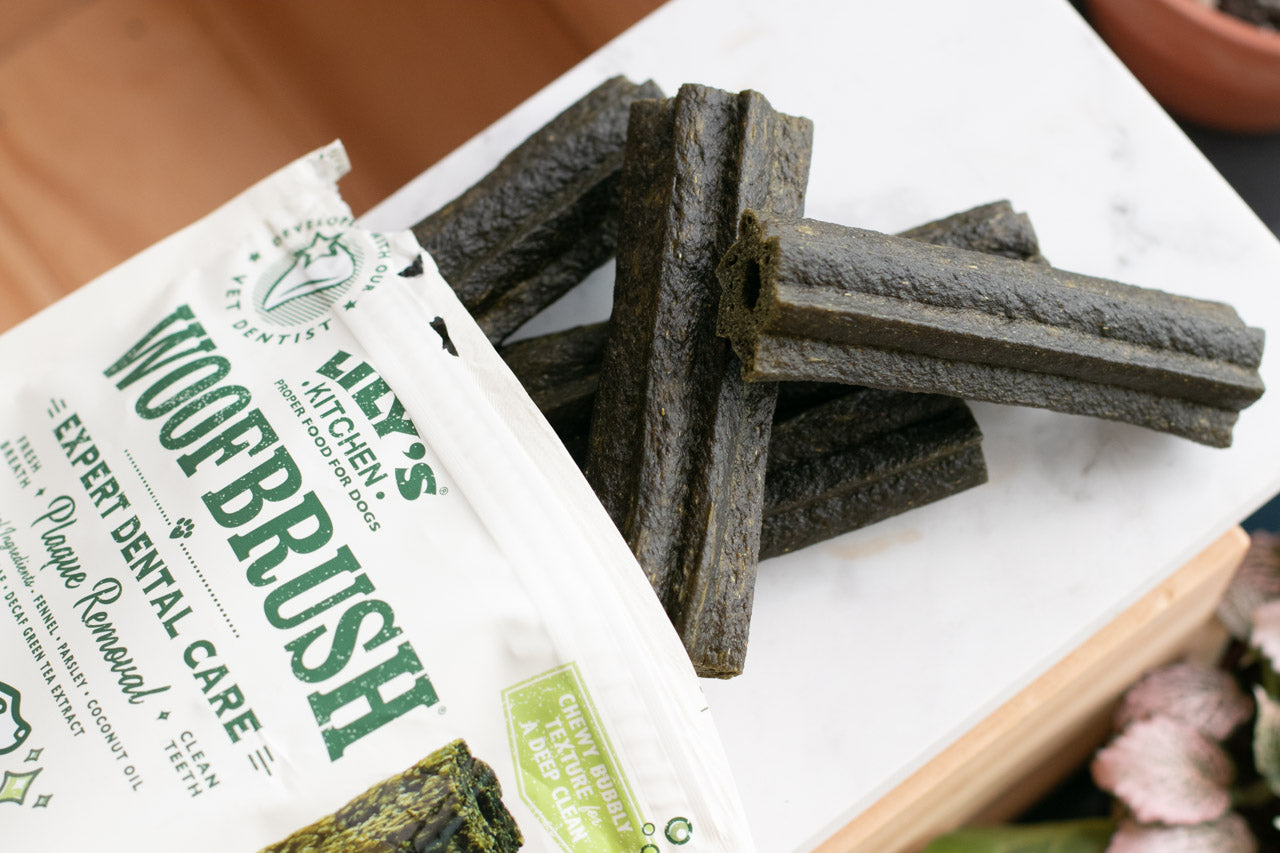"Have you heard? Another dog on Instagram got diagnosed with Pancreatitis!", news we hear from friends almost every week. More and more customers are also coming to us asking for supplements that would help with chronic pancreatitis. This prompted us to find out why it's seemingly becoming such a common condition and how pet parents can avoid it.
We engaged the help of Dr. Kasey Tan, Senior Veterinarian at Mount Pleasant Vet Centre (North) to answer the questions we have surrounding pancreatitis in dogs.
But before we jump into the questions and answers, we should first know what the pancreas does.
What is the pancreas and why is it important?
The pancreas is a vital organ located between the stomach and the small intestine. It serves two main functions - secreting enzymes to aid in digestion and secreting insulin to keep your dog's blood glucose balanced.
A healthy pancreas helps your dog digest proteins, fats, and carbohydrates, and if it's well-taken care of, just like a machine, it should have no problems doing its job. But when something goes wrong with the pancreas, problems would arise.
Let's understand from Dr. Kasey what pancreatitis is and how we can keep our dog's pancreas healthy.
What is pancreatitis and why is it increasingly common?
1. Briefly, what is pancreatitis?
Pancreatitis occurs when the organ is diseased due to the inappropriate release of digestive enzymes within the pancreas, causing damage to itself. Pancreatitis may present in an acute or chronic form.
Acute pancreatitis can happen and progress rapidly and become fatal if not treated in time. Your dog can be healthy one day and in pain the next. Chronic pancreatitis, on the other hand, happens gradually, sometimes without obvious symptoms.
2. How common is it amongst your patients?
On average, approximately 5-10% of patients presented with gastrointestinal (GI) signs test positive for pancreatitis. However, we do not test all the pets, so there could be higher numbers with mild, subclinical pancreatitis.
3. Is it getting increasingly prevalent in recent years? Why?
Yes, and there may be a few reasons for the increase:
-
Awareness of the disease means vets are more likely to perform tests on patients with GI signs
-
Availability of affordable, in-house test kits leads to more testing
-
Affluence-related lifestyle results in more overweight pets, “humanization of pets” (feeding human foods to pets), and lack of exercise
4. What causes pancreatitis?
The exact cause of pancreatitis is not commonly identified. The major factors that contribute to higher risk include:
-
Dietary indiscretion - high-fat diet
-
Middle-aged pets (>5 years old) that are overweight
-
Exposure to drugs, such as corticosteroid and some drugs for controlling seizures and/or toxins*
-
More common in some breeds, such as Miniature Schnauzers, Miniature Poodles, and Terriers
-
Hormonal disorders, such as hypothyroidism, diabetes mellitus, hyperadrenocorticism
*Toxins refer to anything that is potentially harmful to the body, whether via ingestion or absorption through the skin. Examples include:
-
exposure to insecticides, smoke inhalation, industrial or household solvents/chemicals
-
inappropriate use of products, such as ingesting of essential oils, lotions
-
excesses in vitamins, proteins, minerals
-
enterotoxins from inappropriately prepared raw diets
5. What are the symptoms that pet parents should look out for?
The symptoms may range from mild, vague signs to severe, debilitating disease. Common symptoms to look out for include:
-
Lethargy
-
Anorexia
-
Hunched stance or prayer position to deal with pressure and/or pain
-
Vomiting (+/- blood)
-
Diarrhoea (+/- blood)
-
Increased respiratory rate (due to pain)
-
Pain in the cranial abdomen
-
Enlarged abdomen in some cases
6. Is it curable? What are the treatment options?
Severe pancreatitis may be fatal and requires aggressive support, whereas mild pancreatitis often responds to short-term symptomatic therapy and has a good prognosis.
Treatment for mild cases is centred on providing pain relief and fluid therapy to maintain hydration and treatment of the GI signs. For severe cases, additional specific therapy is necessary to correct concurrent diseases (e.g. diabetes). Aggressive treatment, including transfusion medicine, may be required for those experiencing shock.
Keeping Pancreatitis away
7. How likely is it that pancreatitis would reoccur?
Recurrence is likely if diet and lifestyle are not managed. Hence, it is important to keep your pets trim and fit and reduce their fat intake.
8. Can pancreatitis lead to other health issues?
In some cases, the disease could destroy the pancreas’ ability to secrete insulin, resulting in diabetes mellitus.
9. What are the dos and don'ts when it comes to caring for dogs with pancreatitis?
-
Maintain an active lifestyle to keep your pet trim and fit
-
Feed a low-fat balanced diet (also applies to treats)
-
Minimise exposure to potential toxins
-
Appoint a primary vet for your pet’s healthcare. The vet would have your dog's health records and be mindful in avoiding the use of drugs that could potentially trigger pancreatitis
10. Are there any supplements that would improve the condition?
As yet, there is no conclusive study on this. However, it could be helpful to feed antioxidants and pre/probiotics to improve digestive health.
11. Should dogs with a history of pancreatitis always be on a low-fat diet?
Yes, I’d recommend a low-fat, complete, balanced, and appropriate diet.
Choosing a diet for your pets is a very personal decision. However, I must emphasise the absolute need to ensure that your dog's diet is balanced, complete, and appropriate (in terms of appropriateness for the species, life stage, health condition, etc.).
Once we understand this, terms like “high-carb” and ‘low-fat” will have to be relative to what's required to maintain good health for an individual pet. In general, fatty and oily foods must be avoided, and that means no table scraps!
If a pet owner wishes to pursue novel diet trends (with an inappropriate nutritional requirement for the pet), a consultation with a vet nutritionist is strongly recommended so that they would be aware of the consequences of feeding an unbalanced diet.
Vanillapup's End note
The next time you want to give your dog a piece of fried chicken or bits of bacon from your plate, think twice. Succumbing to their puppy eyes as they beg for your table scraps may lead to a trip to the vet with your dog in pain. Not to mention the needles, scans, and IV drips that follow.
The best thing you can do for them is to
-
feed them an easily digestible and nutritious diet that's as complete and balanced as possible
-
supplement the diet wisely with pre/probiotics, digestive enzymes, omega 3, and antioxidants
-
allow them adequate exercise so they can maintain a healthy weight
Featured photo by Chris Benson on Unsplash



